Materials and knife types
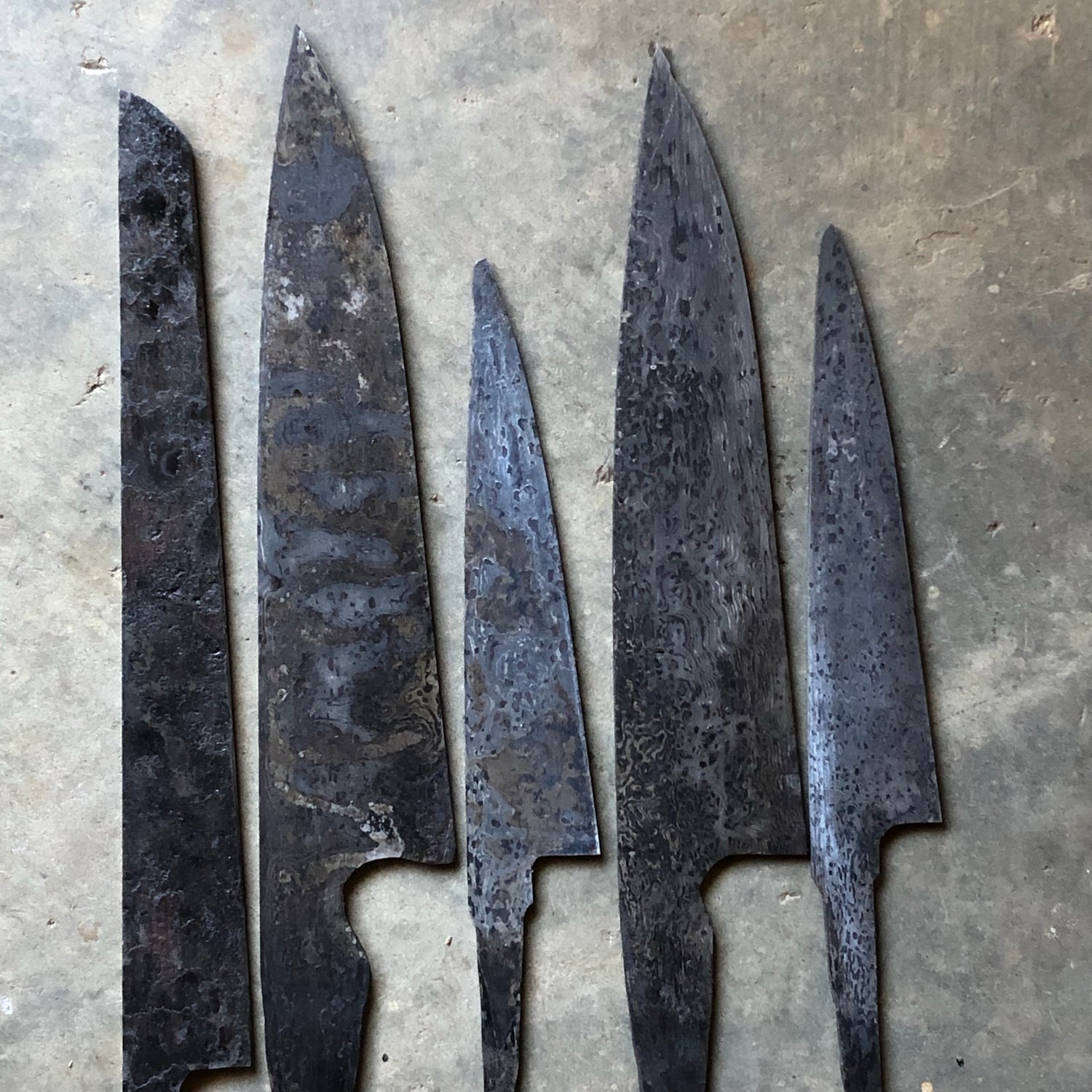
Steel
While I do make stainless steel knives, high carbon steel is my material of choice. Specifically:
52100 - typically used in bearings thanks to its strength and hardness.
26c3 - a high carbon steel manufactured by Uddeholm with similar properties to Hitachi White 2.
Hitachi Steel - very pure carbon steels focused on toughness (Blue 2) and sharpness (White 2).
Pattern Welded (Damascus) - typically a blend of 1084 and 15n2 which I manipulate into a variety of patterns.
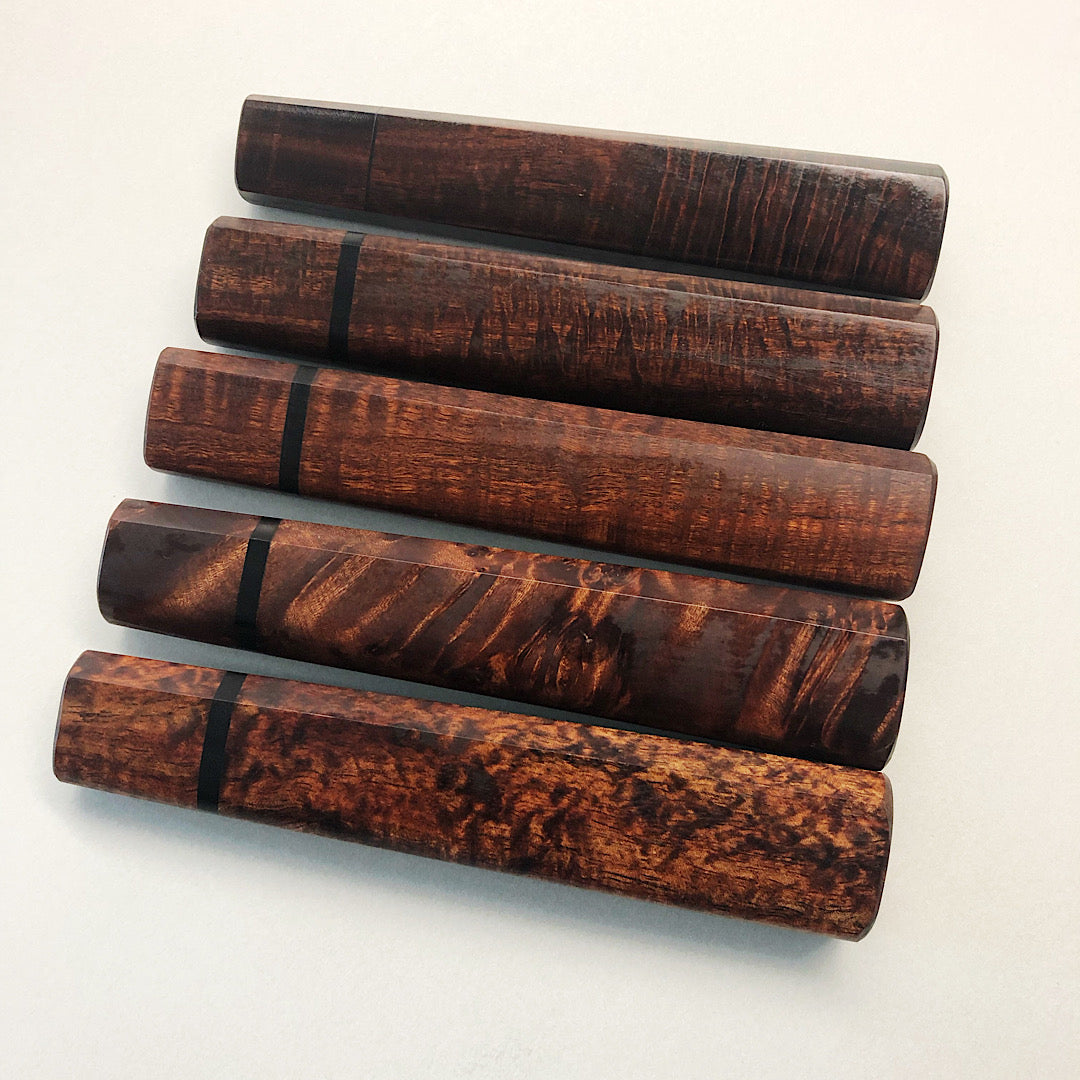
Timber
I work with timbers sourced from around the world. But I prefer sustainably harvested Australian hardwoods including Gidgee and Blackwood which I source from local, small batch suppliers.
Different types of knives
Choosing a knife comes down to your own needs and personal taste, but prefer Japanese knives profiles. From the aptly named ‘Petty’ for smaller jobs, to a Cleaver for heavy chopping, to the workhorse of any kitchen – the Gyuto.
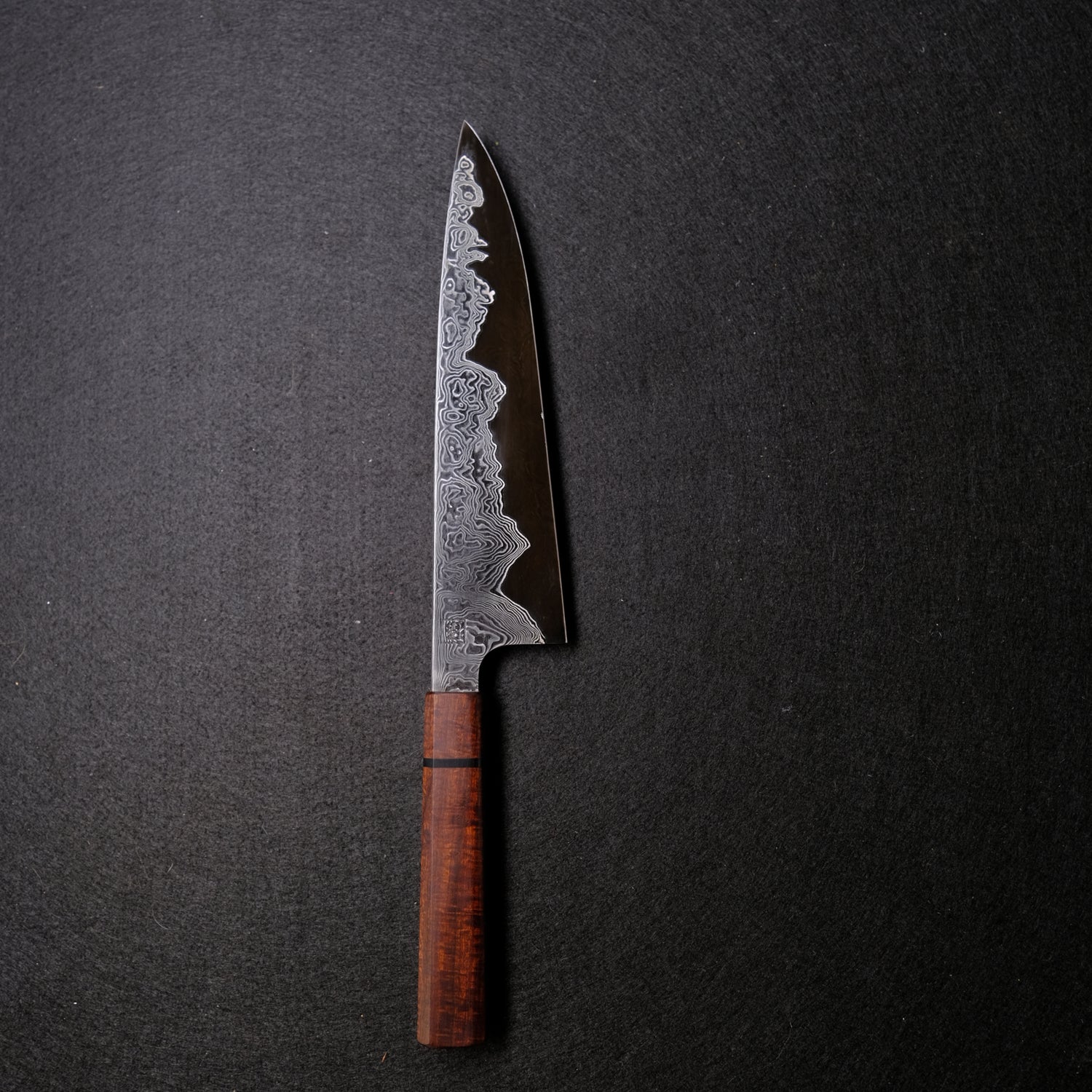
Gyuto
If you only get one knife, make it a Gyuto. It’s versatile enough for most jobs in the kitchen and perfect for chefs and home cooks alike. A Gyuto is the foundation to build your knife set around.
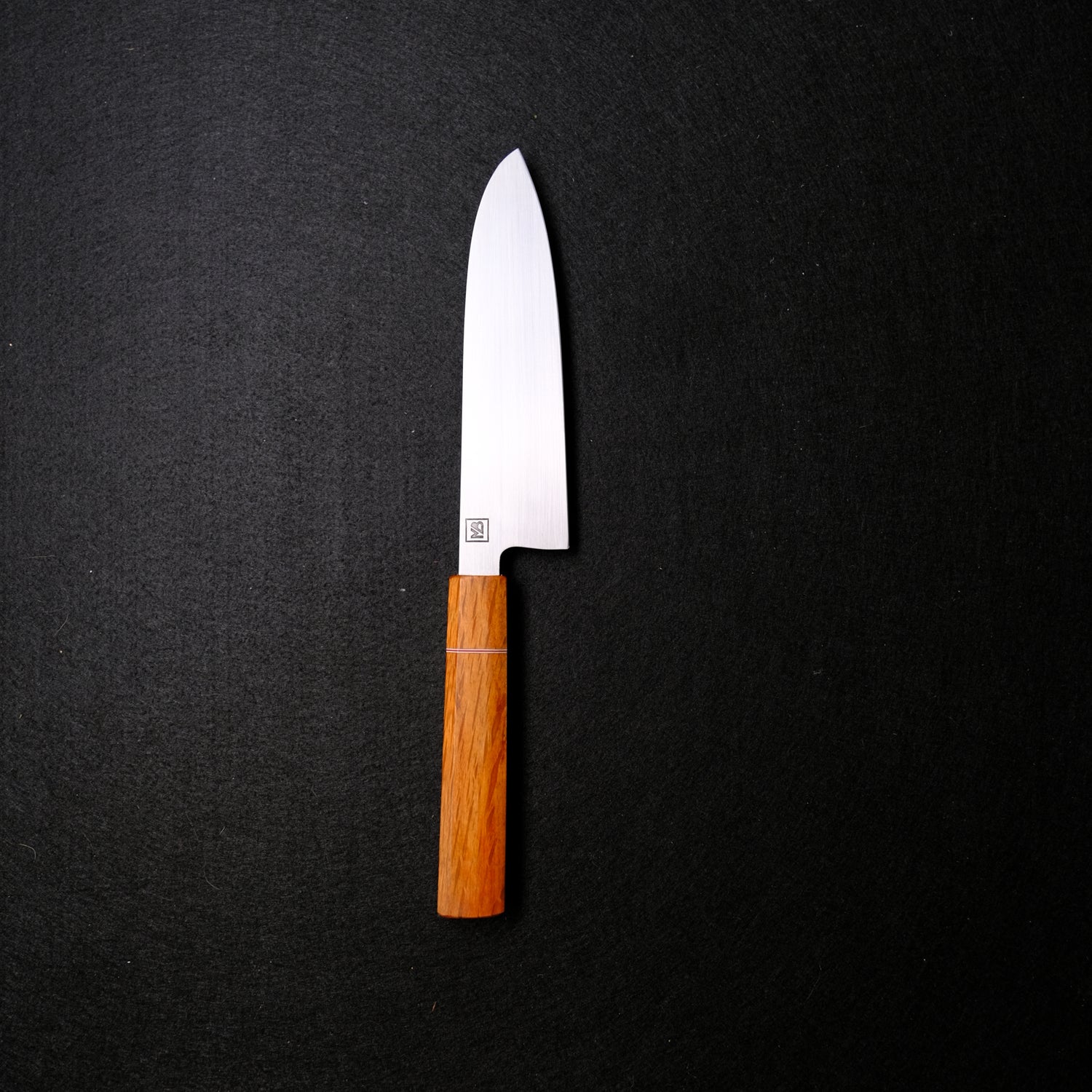
Santoku
Shorter than a Gyuto, with a slightly flatter belly that’s handy for scooping food off chopping boards. Some people find Santokus less intimidating to use than Gyutos. A great all-rounder.
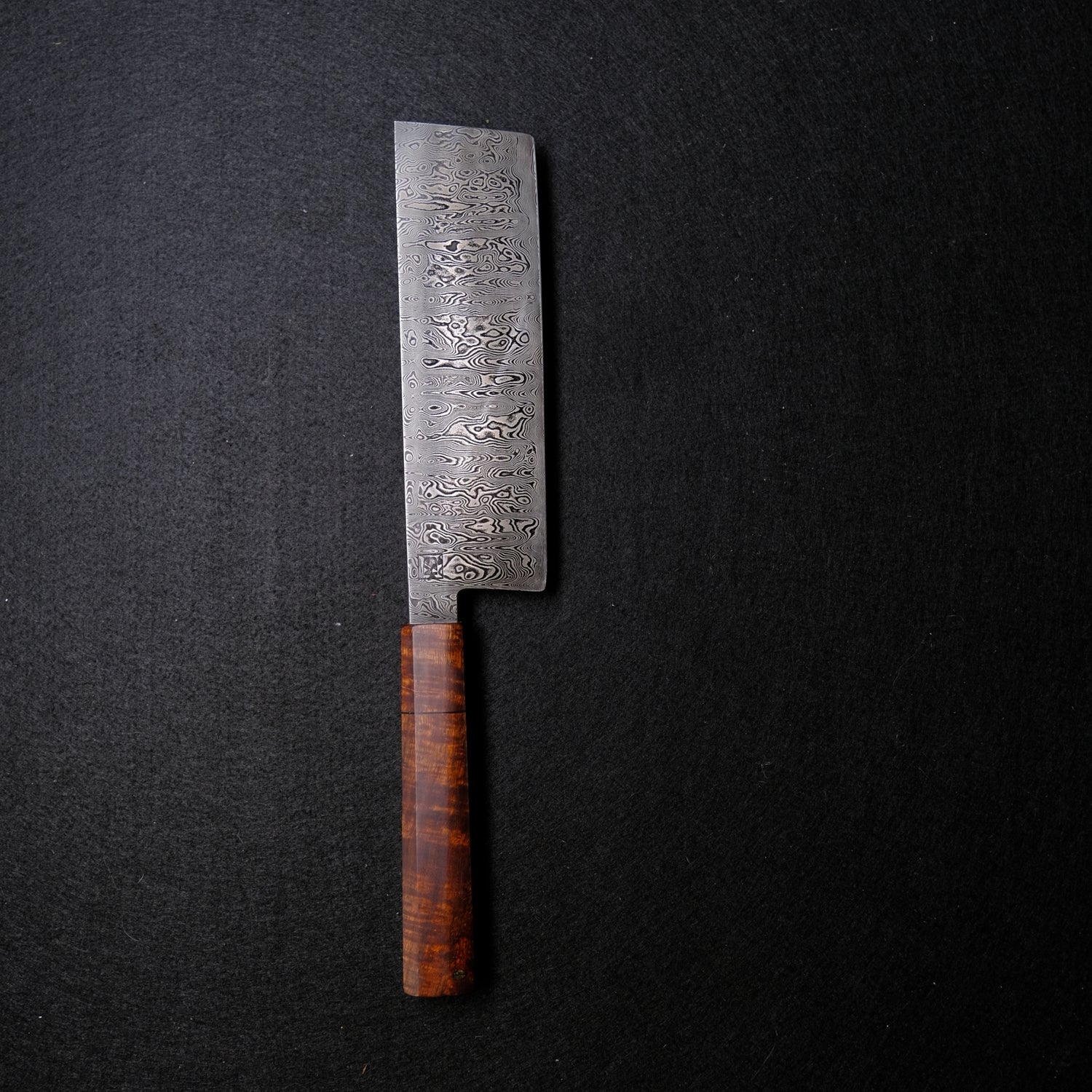
Nakiri
Not to be confused with a Cleaver, the Nakiri has a flat profile which should be used in a flat slicing motion for precision-cut vegetables. The flat blade profile is perfect for push cutting, but it will make rock style cutting uncomfortable.
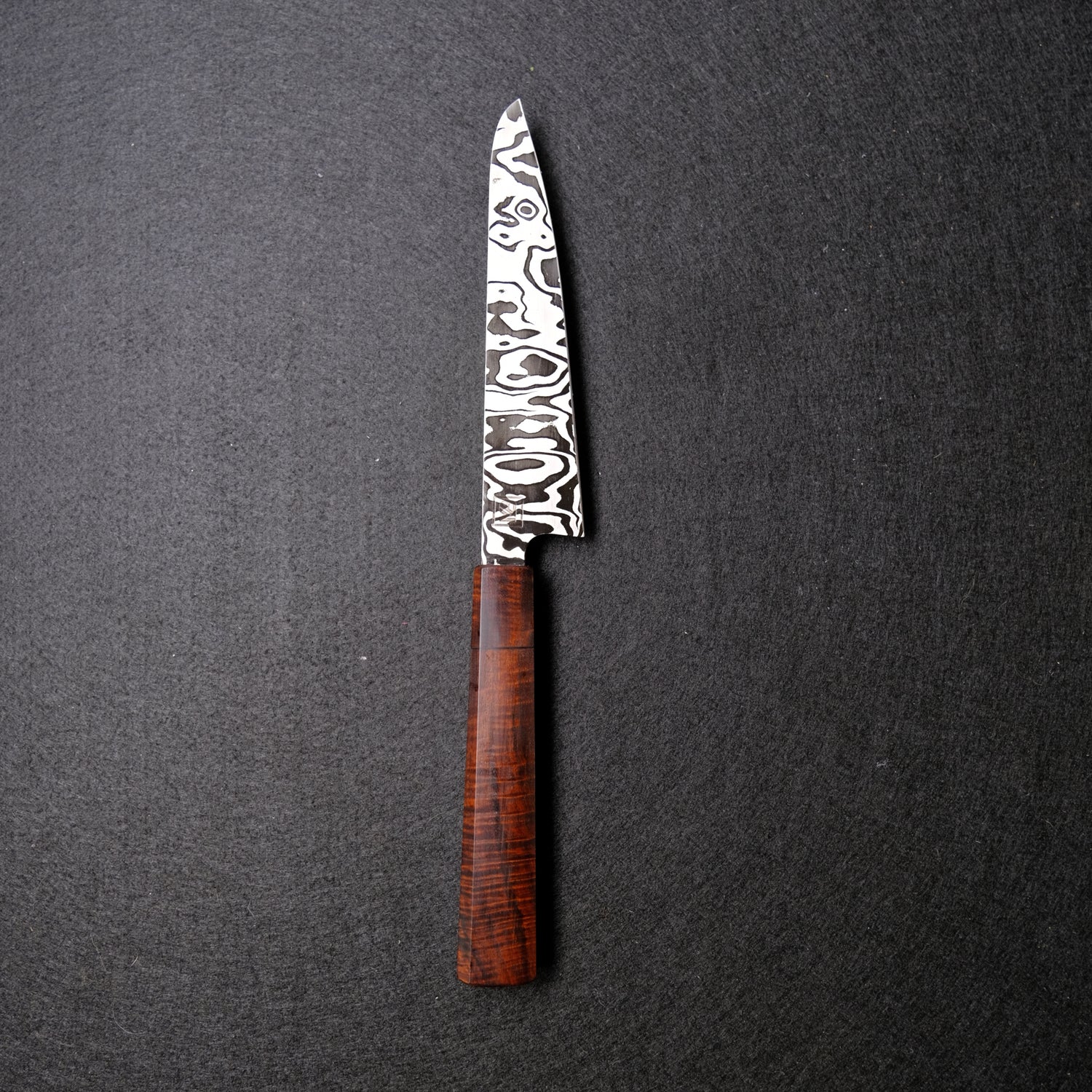
Petty
A smaller utility knife for precision work in tighter quarters. Perfect for peeling, cutting fruits and trimming curly vegetables. I recommend partnering a Petty with a Gyuto.
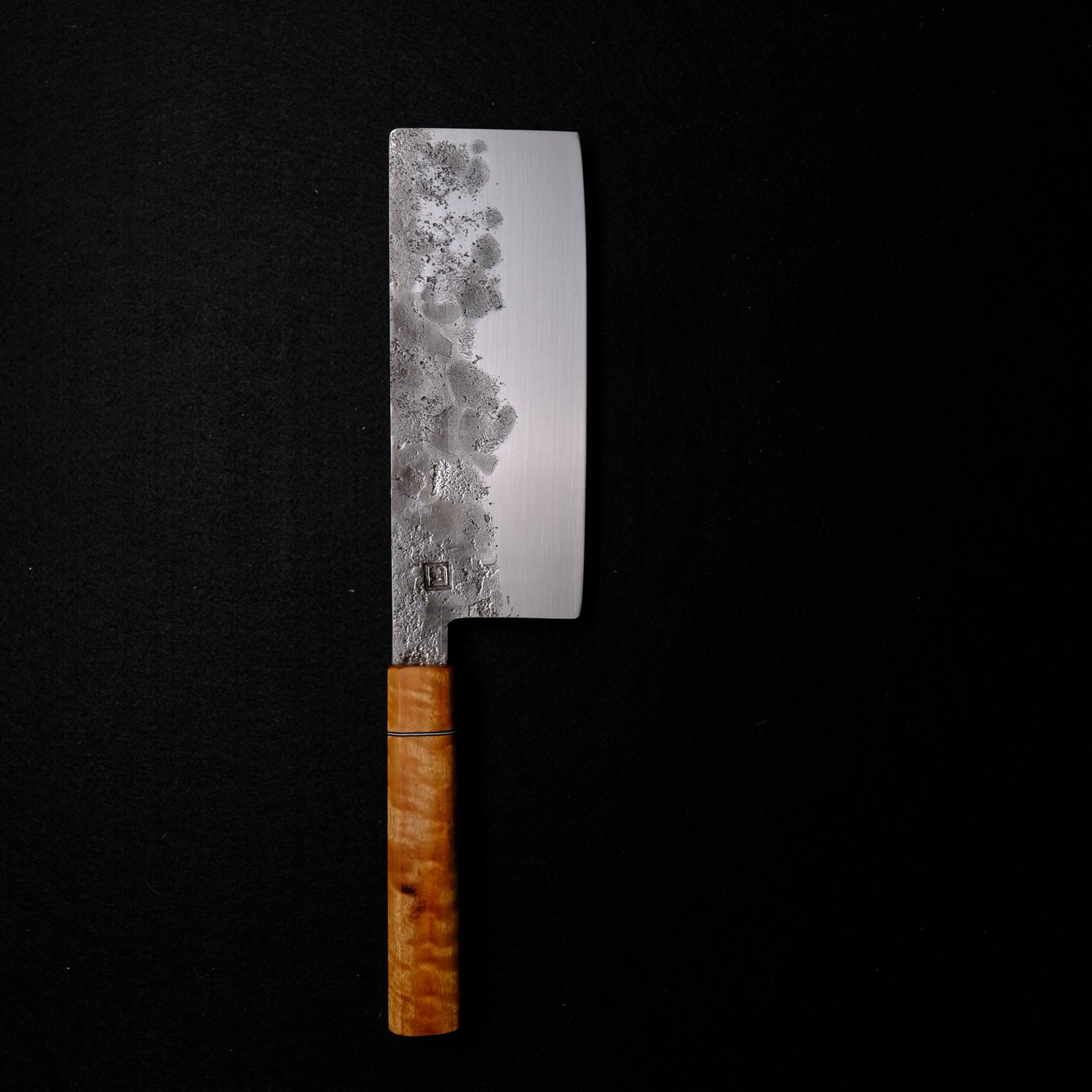
Cleaver
Cleavers (or Choppers) come in a variety of thicknesses and weights. Choosing the right cleaver depends on the job. Thick blades are good for bones while thinner blades are great for meat and vegetables.
